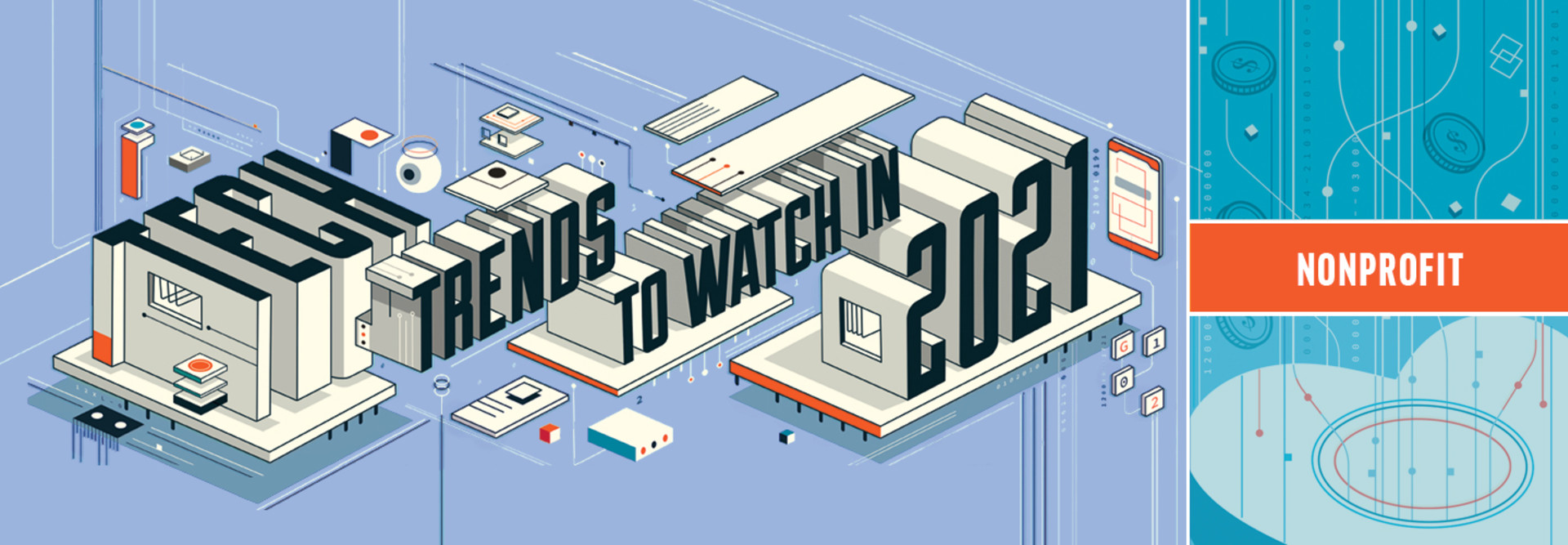The pandemic and its ensuing economic effects have put a lot of nonprofits in precarious positions. This year has seen its fair share of challenges, and at least one study from over the summer found that as many as 38 percent of nonprofits were in danger of closing.
One upside for many organizations, however, has been innovation. Nonprofits have used technology to work through roadblocks, and that deployment could leave them stronger when the pandemic ends.
Good technology is a great storytelling tool, but more than that, it can help strengthen your bottom line in ways that could help your long-term success — especially now. Here are four tech trends that will help nonprofits move forward in 2021.
1. Mobile Fundraising Will Matter More Than Ever
Mobile donations have been climbing for years. According to research from the Blackbaud Institute, mobile donations represented 26 percent of all online donations in 2019, up from just 9 percent in 2014. Giving Tuesday, which has seen much of its growth through mobile giving, saw $2.47 billion in donations in 2020 in the U.S. alone, compared with $1.97 billion in 2019.
Mobile fundraising — often done through apps or texting — matters not just because it’s successful, but because of what it represents for younger generations. Good digital experiences and mobile app design will be key in driving mobile donations.
2. Virtual Events Will Rise and Evolve
When the history books are written, it’s quite likely that the story of 2020 will include an entire chapter on the growth of virtual communication and events. At the start of 2020, apps such as Zoom and Microsoft Teams were relatively niche business tools. Now, they dominate online communication.
That story will likely continue in 2021, but tactics might need to adapt. A recent study from the Goodman Center found that 65 percent of respondents have raised concerns about videoconferences taking up too much of the work week, and some fear that fatigue will also apply to virtual fundraising events, which some say aren’t engaging enough for remote attendees. For nonprofits that offer educational services, such as associations, there are worries that videoconferencing isn't fit for some learning styles.
For nonprofits looking to offer services digitally, as well as those looking to fundraise, this may require shifts in tactics as the virtual event market matures and evolves. A strong cloud infrastructure for storing on-demand content, as well as an investment in business communication or collaboration tools, may be necessary to support online events.
There is a lot of opportunity to excel in 2021 in terms of virtual events, but nonprofits must change with the times.
3. Data Analytics Will Grow in Importance
Data is the driving engine behind many nonprofits. Not only does it shape the way that nonprofits reach out to potential donors, it guides how they manage and distribute their services.
Data analytics tools offered by companies such as Tableau and Splunk can help uncover areas where organizations can improve while helping better analyze data nonprofits already have for potential business opportunities.
With data use come security questions, particularly as security needs shift in an increasingly mobile world. Nonprofits will need to keep up.
4. AI-Powered Personalization Will Help Nonprofits Find Their Donors
Nearly as valuable as data to many nonprofits is what they can do with that data and how they can use it to target potential donors. For example, direct mail campaigns are still a prime way for nonprofits to reach audiences with their messages.
In the digital world, this kind of targeting gets kicked into overdrive — via email, social media and text messaging. Not only can tech help messaging scale up, it can also help drill down to specialized audiences so that messaging can better match. Thanks to artificial intelligence tools such as automation, nonprofits can narrowly tailor and personalize their messaging for maximum impact and minimal effort. This is particularly effective on major giving days like Giving Tuesday.
These tools can be added simply through managed cloud services, offering nonprofits the opportunity to scale up as needed. AI has the potential to help nonprofits better conduct their missions with tools like chatbots, whether that mission is fighting human trafficking or otherwise serving the community.
The elements available for the nonprofit digital toolkit in 2021 are many. It all comes down to understanding your needs.













